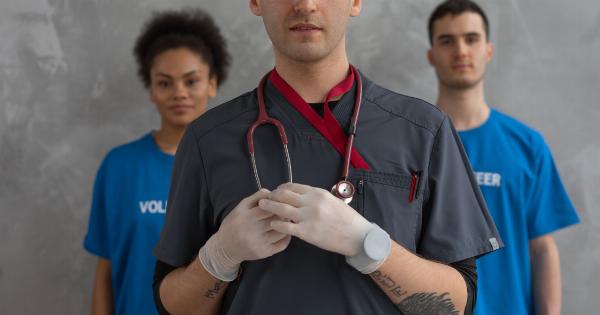Accurate diagnosis is crucial when it comes to treating orthopedic injuries effectively. However, there are instances where medical professionals make mistakes, leading to wrongly diagnosing such injuries.
This article explores the impacts of such misdiagnosis on patients, as well as society as a whole.
Understanding Orthopedic Injuries
Orthopedic injuries refer to any damage that affects the musculoskeletal system, including the bones, muscles, joints, ligaments, and tendons. These injuries can range from simple sprains and strains to more severe fractures, dislocations, and tears.
Accurate diagnosis is essential to determine the extent of the injury and develop an appropriate treatment plan.
The Dangers of Misdiagnosis
Wrongly diagnosing orthopedic injuries can have severe consequences for patients. Firstly, it can delay proper treatment.
For example, a fractured bone that is misdiagnosed as a sprain may not receive the necessary immobilization or surgical intervention, resulting in improper healing, chronic pain, or even long-term disability.
In some cases, misdiagnosis can lead to unnecessary surgeries or invasive interventions.
Imagine a patient wrongly diagnosed with a torn meniscus undergoing surgery only to discover later that the initial injury was a simple strain that could have been treated conservatively. Such unnecessary procedures not only pose additional risks for patients but also contribute to healthcare costs and resource allocation inefficiencies.
Another crucial impact of misdiagnosis is the potential for psychological distress. A patient who is subject to unnecessary treatments or interventions due to a misdiagnosis may experience anxiety, stress, or even post-traumatic stress disorder (PTSD).
Furthermore, the frustration of not being accurately diagnosed and treated can erode the patient’s trust in the healthcare system, leading to decreased compliance with future treatment recommendations.
Financial Implications
The economic burden associated with wrongly diagnosing orthopedic injuries is significant. One primary consequence is the increased healthcare costs resulting from unnecessary tests, surgeries, and treatments.
Misdiagnosis contributes to the overutilization of healthcare resources, which can strain healthcare systems and increase costs for both individuals and society.
Moreover, misdiagnosis may also lead to legal consequences. Patients who suffer harm due to incorrect diagnoses can file malpractice claims against healthcare providers, resulting in substantial financial settlements or judgments.
The cost of litigation and the subsequent impact on malpractice insurance premiums can further strain the healthcare system.
Patient Safety and Quality of Care
Wrongly diagnosing orthopedic injuries raises concerns about patient safety and the overall quality of care provided. Medical errors, including misdiagnosis, are a leading cause of patient harm worldwide.
By failing to accurately diagnose orthopedic injuries, healthcare providers are compromising patient safety and failing to deliver the standard of care that patients rightfully expect.
Misdiagnosis can also impact the reputation and credibility of healthcare institutions and professionals.
Patients who experience significant harm due to misdiagnoses may share their negative experiences, potentially tarnishing the reputation of the healthcare institution and deterring others from seeking care there. The loss of trust can be detrimental to both the institution and the patients it serves.
Importance of Proper Diagnosis
Correctly diagnosing orthopedic injuries is essential for several reasons. Firstly, it ensures that patients receive appropriate and timely treatment, thus promoting optimal recovery outcomes.
Accurate diagnoses also help physicians identify potential complications or associated injuries that may require specific interventions or additional monitoring.
Additionally, proper diagnosis contributes to patient satisfaction. When patients feel heard, understood, and correctly diagnosed, their confidence in the healthcare system increases, enhancing their overall care experience.
This, in turn, leads to better patient-provider relationships and improved patient compliance with treatment plans.
Preventing Misdiagnosis
Reducing misdiagnosis rates requires a multi-faceted approach. Healthcare providers should prioritize continuing education and stay updated on the latest advancements in orthopedic diagnosis and treatment.
Improved access to imaging technologies, such as X-rays, MRIs, and CT scans, can aid in accurate diagnosis, especially in complex cases.
Implementing standardized diagnostic protocols and utilizing decision support tools can help clinicians avoid common pitfalls and minimize diagnostic errors.
Encouraging teamwork and fostering collaboration between healthcare providers, such as primary care physicians, orthopedic specialists, and radiologists, can also facilitate accurate diagnosis by drawing on collective expertise.
The Role of Technology
The advancement of technology has the potential to significantly improve orthopedic diagnosis and reduce the occurrence of misdiagnoses.
Computer-aided diagnosis systems, based on machine learning algorithms, can analyze medical images and assist healthcare providers in reaching accurate diagnoses.
Furthermore, telemedicine and remote consultation platforms enable healthcare professionals to collaborate and seek second opinions from specialists worldwide, reducing the chances of misdiagnosis and improving patient care outcomes, particularly in areas with limited access to specialized orthopedic care.
The Way Forward
Efforts to reduce the impacts of wrongly diagnosing orthopedic injuries must be prioritized.
Healthcare systems should invest in ongoing education and training for healthcare providers, emphasizing the importance of accurate diagnosis and highlighting strategies to minimize diagnostic errors. Research into improving diagnostic accuracy and developing innovative tools should be encouraged and supported.
To achieve proper diagnosis, patients should be active participants in their healthcare journey.
They should inform healthcare providers of their symptoms, provide a comprehensive medical history, and seek clarifications if they have doubts or concerns about a diagnosis. Building strong doctor-patient relationships based on trust and effective communication is critical in preventing misdiagnoses.
Ultimately, accurate diagnosis is the cornerstone of effective orthopedic injury management.
By recognizing the impacts of misdiagnosis, advocating for awareness and prevention, and embracing technological advancements, we can strive for a healthcare system that delivers the highest standard of care for all individuals, ensuring optimal patient outcomes and overall well-being.





























